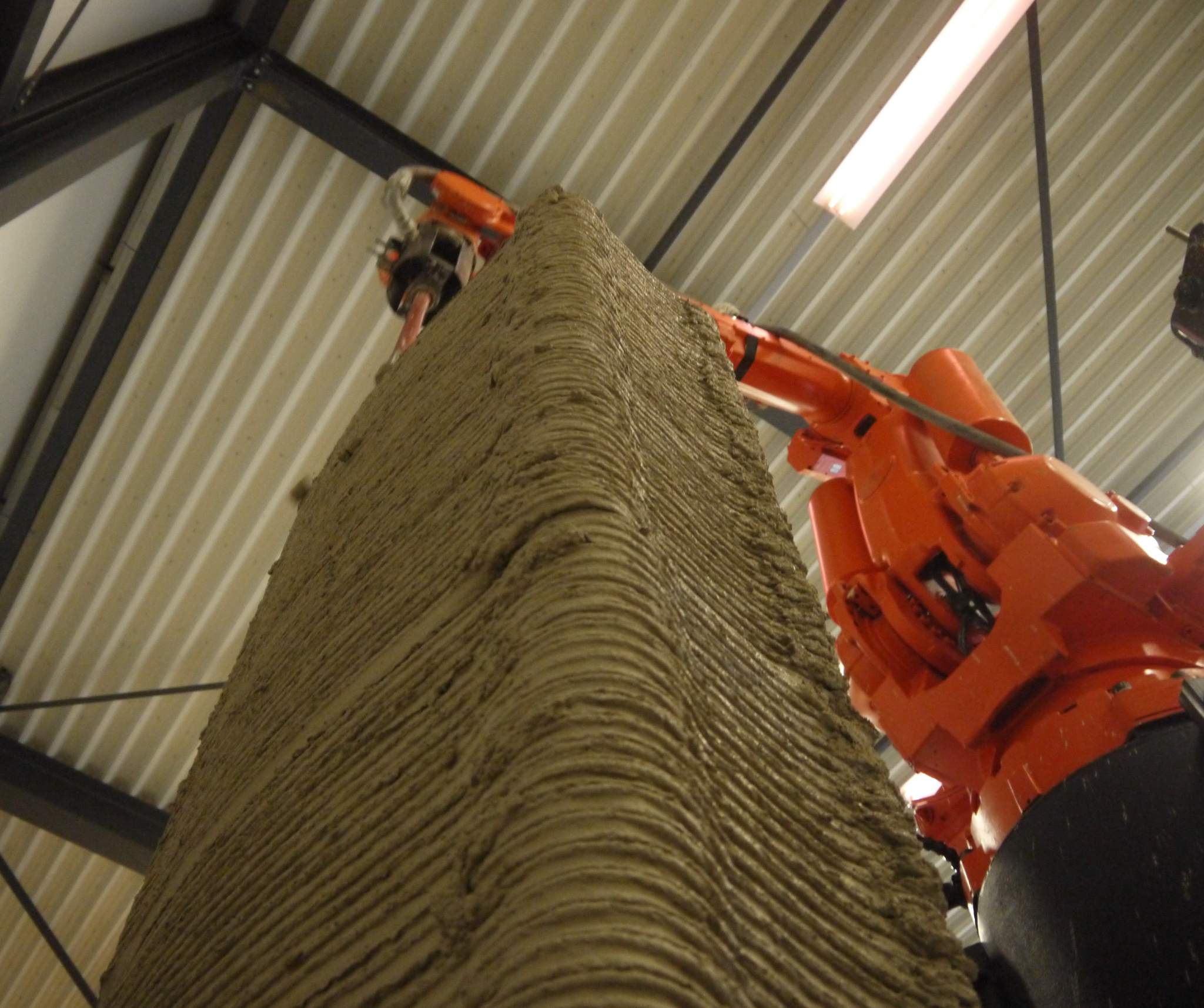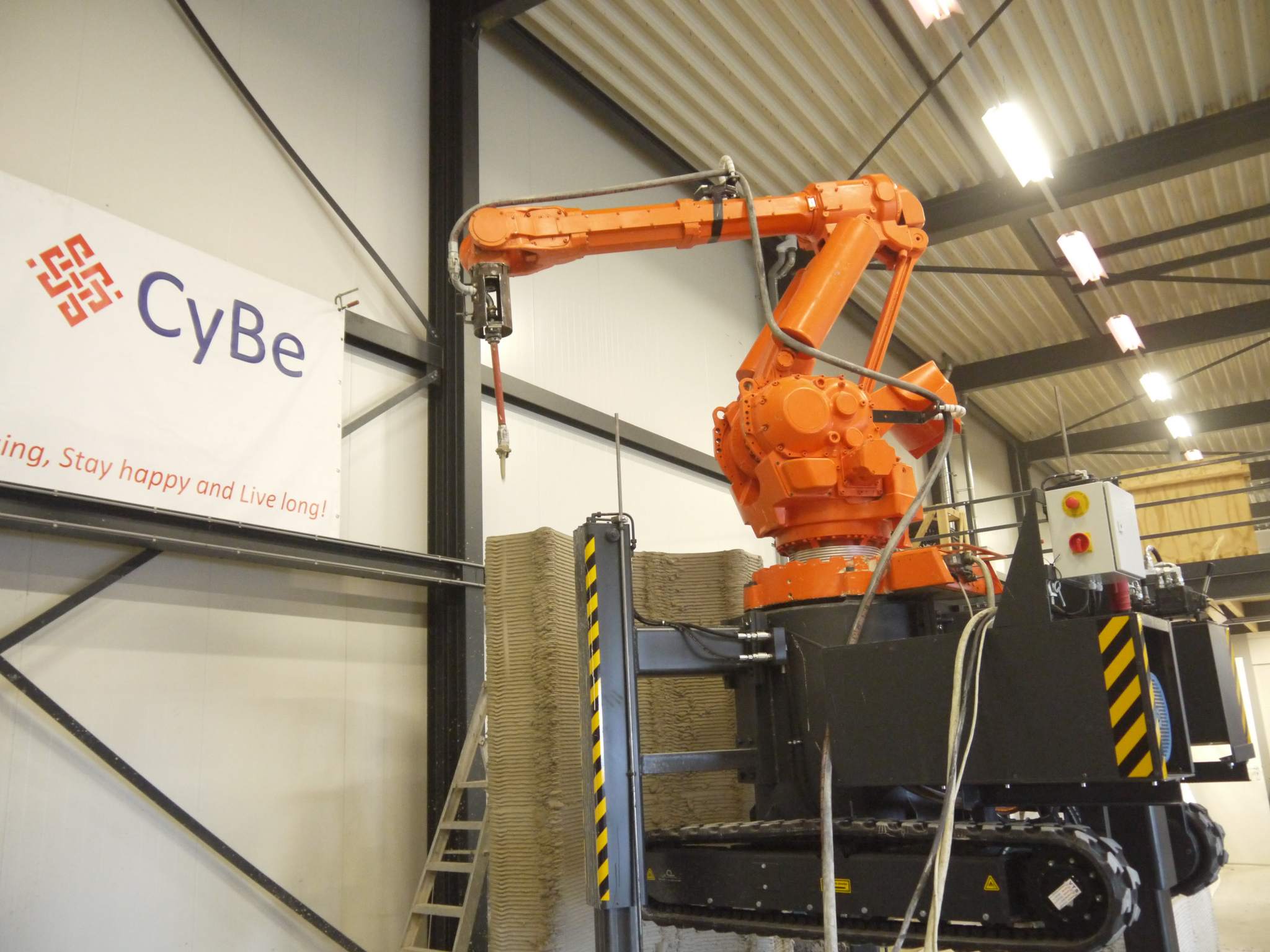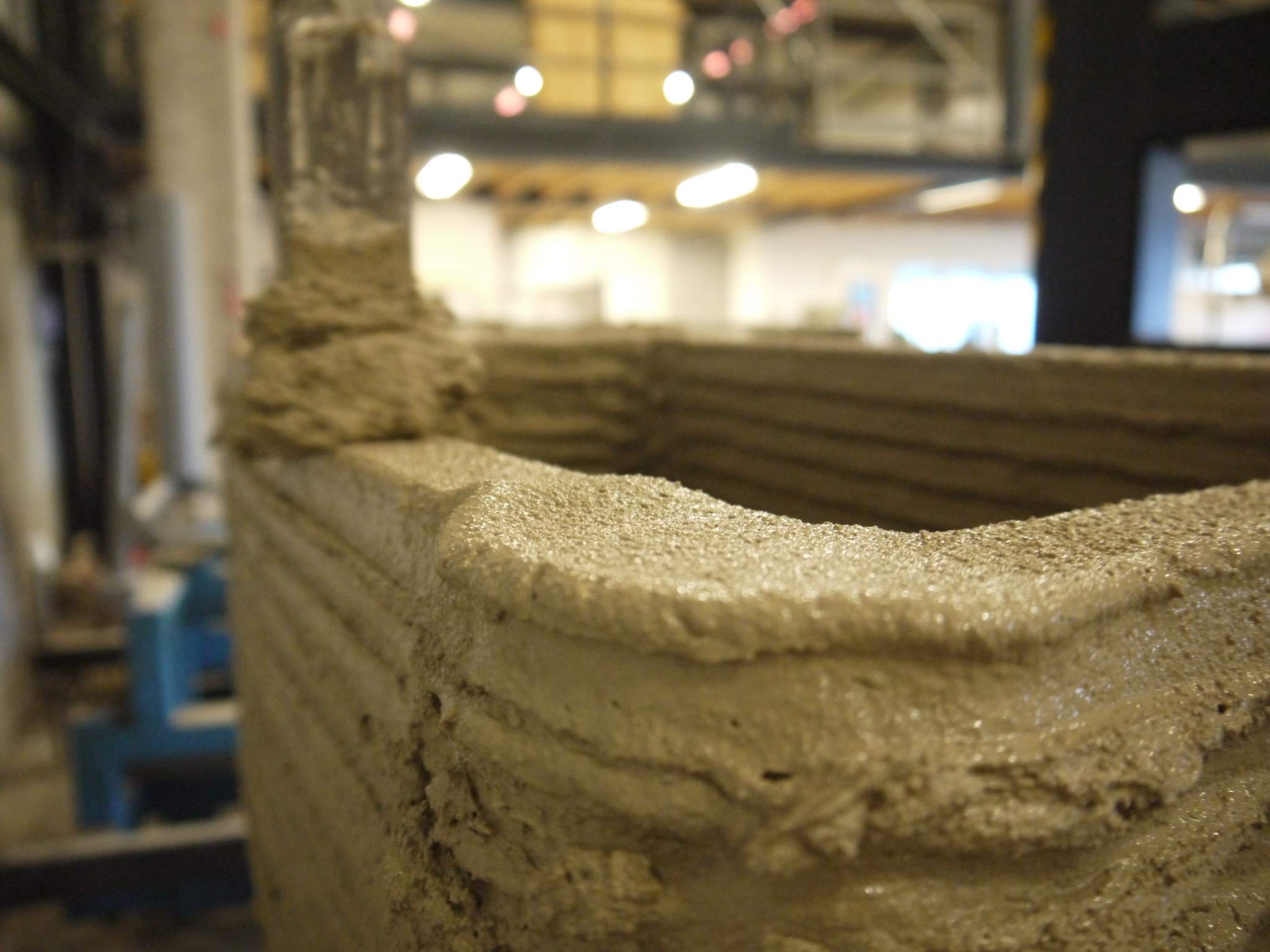Dutch company CyBe Construction have placed a concrete 3D printer, the CyBe RC 3Dp, on rubber wheel tracks giving it the ability to roam around a construction site. While concrete 3D printers are not a new innovation, with Sunconomy already attempting to 3D print houses, CyBe believe they are the first to create a mobile concrete 3D printer and so we asked them about their future plans for the printer.

Using 3D printing in construction means the process can be cheaper, faster and create less waste. However, there are some limitations to the method including the range or distance the devices can cover. This offering from CyBe attempts to alleviate the issue by attaching rubber tracks to the concrete printer which when coupled with extendable legs means printing can take place on even the toughest terrains. By extending the undercarriage of the 3D printer it can reach heights up to 4.5 meters tall.

What can it print?
The printer can print at a rapid speed thanks to CyBe’s fast drying concrete mortar at 200 mm/s with an enhanced speed of 600 mm/s. The CyBe 3D printable mortar means load bearing structures can be formed within an hour of being printed and this is key to the success of this printer. The mobile printer has a variety of applications, as CyBe explains, it can print formworks, walls, sewer pits, abutments, floors, and more.
While the prints at the moment are not the most aesthetically pleasing, this concrete 3D printer does appear well suited for printing basic structures quickly and cheaply. Especially since the added mobility means printing can occur on-site rather than having to transport prints from a warehouse. However, it is possible to 3D print concrete with smooth finishes as Catalonian designers have shown recently with their 3D printed bridge.

Application in Dubai
Following announcement of the printer, the next task for CyBe and their mobile 3D printer is to test how it functions on-site and they will do exactly that by transporting a CyBe RC 3Dp to Dubai early next year. The enterprise will work with the Dubai Electric and Water Authority (DEWA) in order to develop the R&Drone Laboratory and have already begun planning and designing the construction.
The R&Drone Laboratory is a large-scale project in which CyBe will engineer and print the structure. During the first quarter of 2017 CyBe will transport the mobile device to Dubai. The DEWA have specified that they want to incorporate 3D printing in future buildings and CyBe will be responsible for designing, engineering and on-site production of the 3D concrete building components. Other organizations involved include structural engineers Witteveen + Bos, main contractors CONVRGNT and architects Wanders-Wagner.
Featured image of the CyBe RC 3Dp while printing. Image via CyBe Construction.



